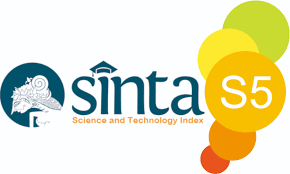Design and Implementation of Water Monitoring Program in Peatlands IoT Based
DOI:
https://doi.org/10.34010/injuratech.v3i2.14173Abstract
Forests and peatlands in Indonesia are experiencing constant degradation, caused mainly by farming activities, illegal logging, and forest fires. One way of addressing this problem is to restore the hydrology of the forest and peatland ecosystems through the monitoring water table and blocking the ditches and canals. Monitoring the water table aims to observe the groundwater level in the peatland area before and after the canal blocking was built. Building blocks and dams, it is expected that the water level and retention in the ditches and canals and nearby forest and peatlands will increase, reducing the danger of fire during the dry season and improving the possibility of rehabilitating nearby degraded land. An approach for a water monitoring program is based on a water level control system and hydrology logger. This large amount of water runoff will be monitored through high surface water data storage devices. The process of monitoring the water level is done continuously with integrating systems using IoT to obtain the latest condition data of hydrological variables in the field from a distance to be done various actions needed to avoid peatland forest fire
References
[2] Ramankutty, N., Gibbs, H. K., Achard, F., Defries, R., Foley, J. A., & Houghton, R. A. (2007). Challenges to estimating carbon emissions from tropical deforestation. Global change biology, 13(1), 51-66.
[3] Aust, W. M., & Lea, R. (1991). Soil temperature and organic matter in a disturbed forested wetland. Soil Science Society of America Journal, 55(6), 1741-1746.
[4] Perumal, T., Sulaiman, M. N., and Leong, C. Y. 2015. Internet of Things (IoT) enabled water monitoring system. In 2015 IEEE 4th Global Conference on Consumer Electronics (GCCE) (pp. 86-87). IEEE.
[5] Sin-wai, C., Kin-wah, M., & Ming, L. S. (2024). Routledge Encyclopedia of Technology and the Humanities. Routledge.
[6] Dave, E. (2011). How the next evolution of the internet is changing everything. The Internet of Things, 2011.
[7] Perumal, T., Sulaiman, M. N., Mustapha, N., Shahi, A., & Thinaharan, R. (2014, October). Proactive architecture for Internet of Things (IoTs) management in smart homes. In 2014 IEEE 3rd global conference on consumer electronics (GCCE) (pp. 16-17). IEEE.
[8] Perumal, T., Sulaiman, M. N., & Leong, C. Y. (2013). ECA-based interoperability framework for intelligent building. Automation in Construction, 31, 274-280.
[9] Taylor, C. J., & Alley, W. M. (2001). Ground-water-level monitoring and the importance of long-term water-level data (Vol. 1217). Denver, CO, USA: US Geological Survey.
[10] Twilley, R. R., & Rivera-Monroy, V. H. (2005). Developing performance measures of mangrove wetlands using simulation models of hydrology, nutrient biogeochemistry, and community dynamics. Journal of Coastal Research, 79-93.











